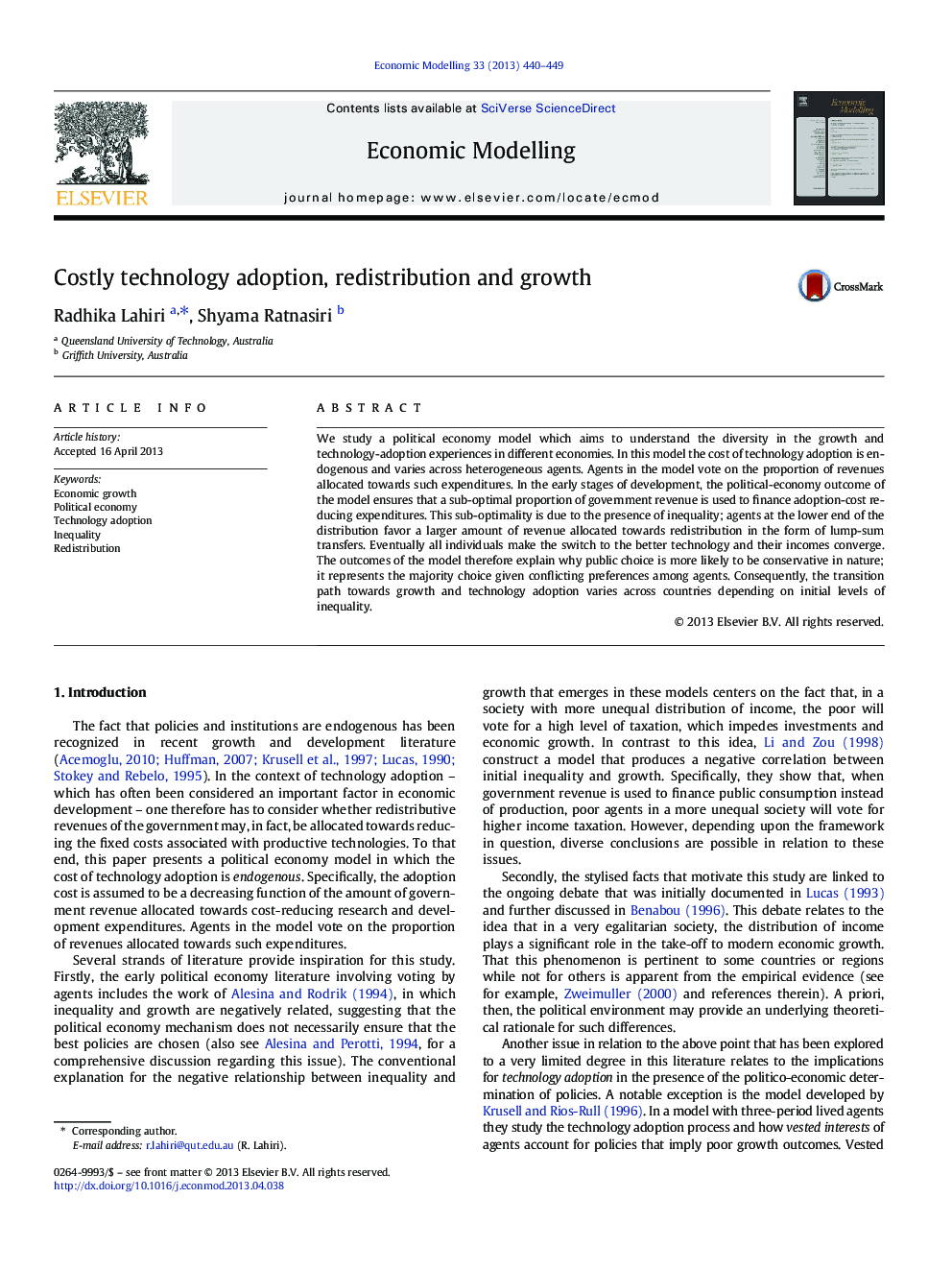| Article ID | Journal | Published Year | Pages | File Type |
|---|---|---|---|---|
| 5054470 | Economic Modelling | 2013 | 10 Pages |
Abstract
We study a political economy model which aims to understand the diversity in the growth and technology-adoption experiences in different economies. In this model the cost of technology adoption is endogenous and varies across heterogeneous agents. Agents in the model vote on the proportion of revenues allocated towards such expenditures. In the early stages of development, the political-economy outcome of the model ensures that a sub-optimal proportion of government revenue is used to finance adoption-cost reducing expenditures. This sub-optimality is due to the presence of inequality; agents at the lower end of the distribution favor a larger amount of revenue allocated towards redistribution in the form of lump-sum transfers. Eventually all individuals make the switch to the better technology and their incomes converge. The outcomes of the model therefore explain why public choice is more likely to be conservative in nature; it represents the majority choice given conflicting preferences among agents. Consequently, the transition path towards growth and technology adoption varies across countries depending on initial levels of inequality.
Related Topics
Social Sciences and Humanities
Economics, Econometrics and Finance
Economics and Econometrics
Authors
Radhika Lahiri, Shyama Ratnasiri,
